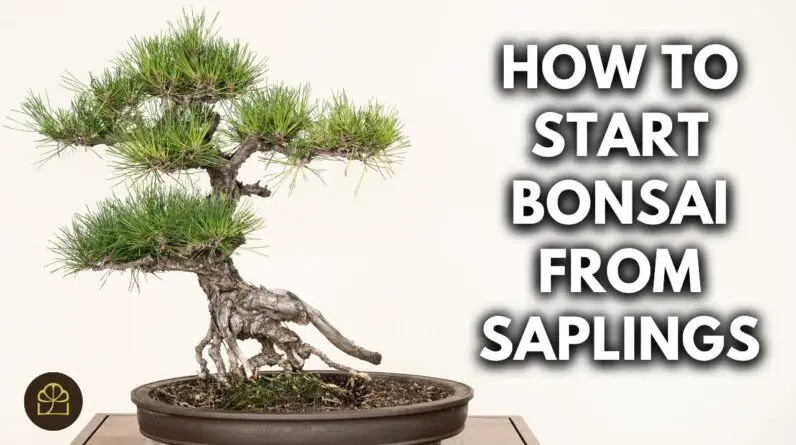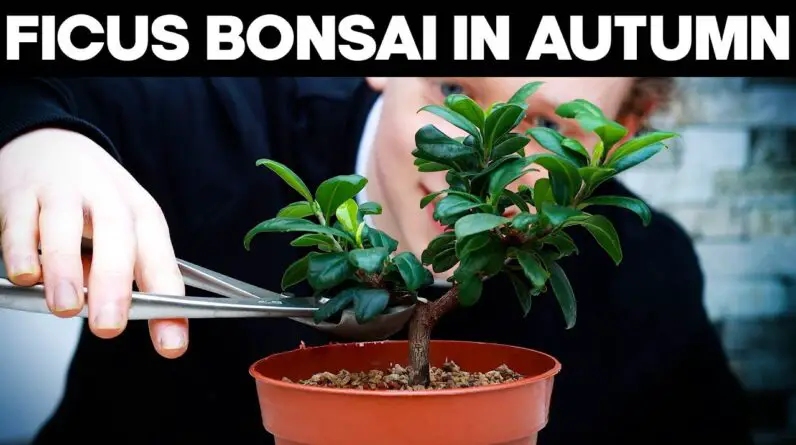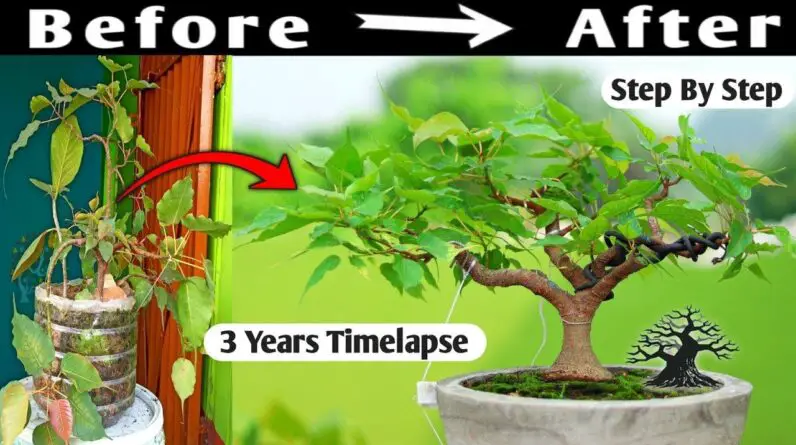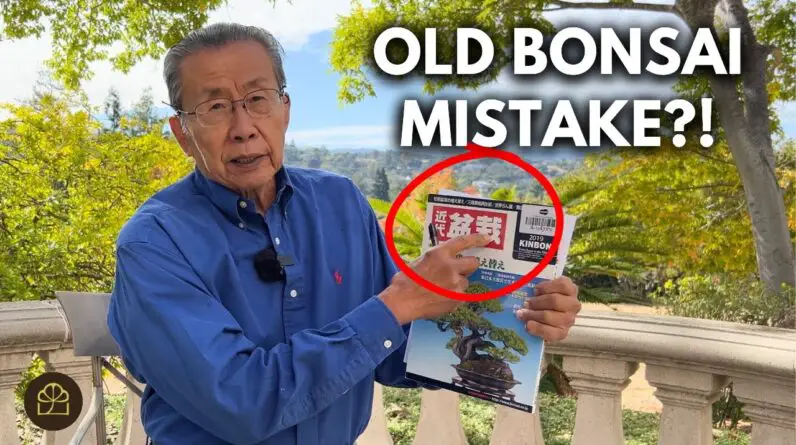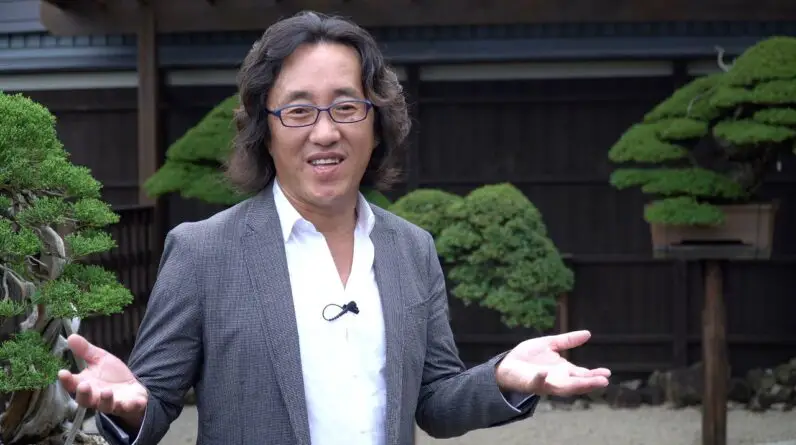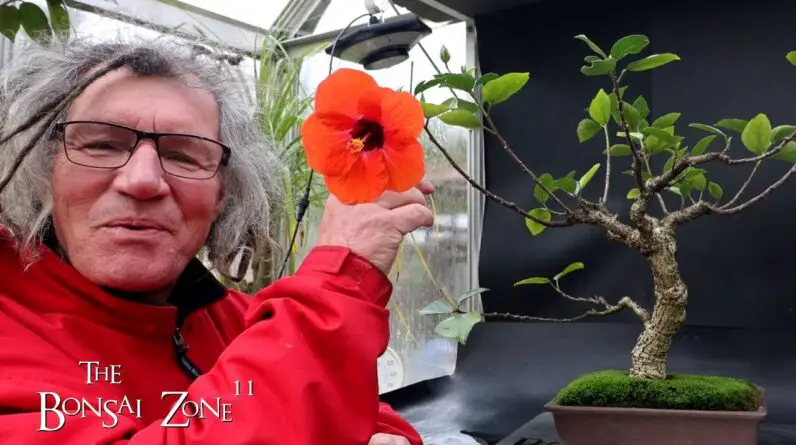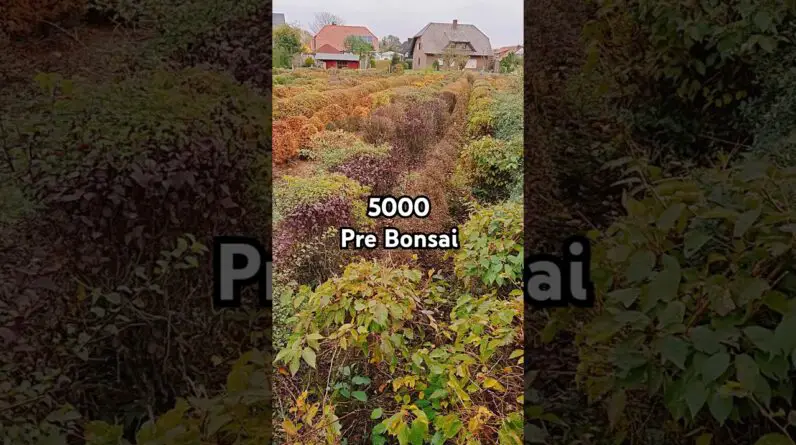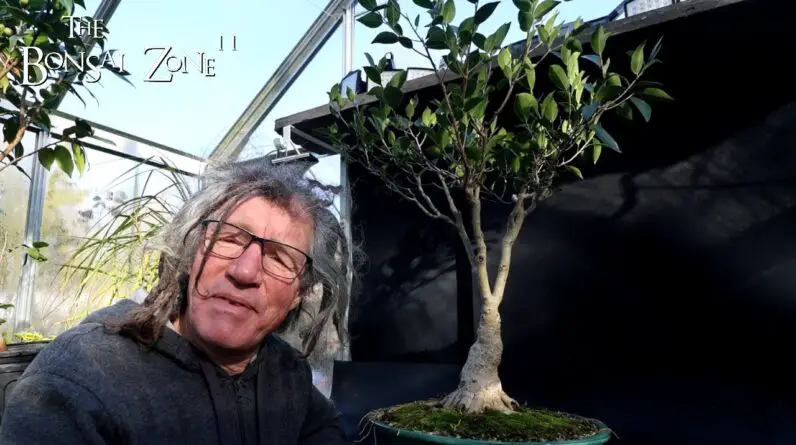Wish to find out exactly how to make an Apple bonsai tree? In this video clip by Bonsai Realm, they show you exactly how to prune and wire an Apple tree that is around 15 years old. The video clip was filmed during fall, when the tree was loaded with small apple trees.
Bonsai Empire is passionate about sharing the living art of Bonsai and produced this do it yourself tutorial to aid and motivate beginners. This video belongs to their on-line courses, but they supply numerous other totally free videos also.
So if you want learning more regarding Bonsai techniques, head over to Bonsai Realm’s website!
In the video, they describe the procedure of pruning and circuitry this Apple bonsai tree. They utilize small pruning shears, pliers, and cable cutters. The leading branch is the initial to be trimmed, and after that they focus on 2 thicker branches to accomplish the desired shape.
They demonstrate the importance of a 360-degree approach when cutting and electrical wiring to prevent any kind of dead angles. After the pruning and electrical wiring, the tree looks more polished and balanced. With normal upkeep, this tree will certainly continue to thrive and grow brand-new branches in the upcoming spring. If you want to discover more about trimming, wiring, and repotting strategies, consider joining Bonsai Empire’s online programs and access to professional support and the possibility to ask the teachers inquiries straight.
Apple Bonsai Tree: An Intro
Invite to the world of apple bonsai trees! Producing and cultivating a miniature apple tree can be a satisfying and fulfilling leisure activity. Not only do these bonsai trees offer a stunning aesthetic, but they additionally use the opportunity to expand your very own fruits in a small and workable room.
In this detailed write-up, we will certainly guide you through the procedure of choosing the ideal apple tree range, gathering the essential products, growing the tree from seeds, trimming and electrical wiring methods, appropriate upkeep, potting considerations, and the differences between outside and indoor apple bonsai trees.
Think about the Dimension of the Bonsai
When choosing an apple tree variety for bonsai growing, it is essential to think about the ultimate dimension of the tree. Since bonsai trees are meant to be miniature variations of their bigger equivalents, picking a range that naturally stays small is vital. Try to find apple tree selections that are known for their portable growth and smaller sized stature, such as columnar apple trees or normally dwarf selections. This will certainly make certain that your bonsai stays symmetrical and is much easier to take care of.
Choose a Crab Apple Tree Variety
Crab apple trees, with their small and vibrant fruits, are typically the preferred selection for apple bonsai farming. These trees normally have a lot more fragile and symmetrical attributes, making them well-suited for bonsai appearance. Furthermore, crab apple trees are durable and adaptable, making them much easier to look after and keep as bonsai specimens. Think about selections such as Malus sylvestris or Malus floribunda, which are frequently utilized in bonsai farming.
Take into consideration the Climate and Location
Before choosing the apple tree selection for your bonsai, it is necessary to take into consideration the climate and location where you prepare to expand it. Various apple tree selections thrive in various climates, so pick a variety that is appropriate to your particular area. Additionally, keep in mind the quantity of sunlight and temperature level demands of the selected range. A lot of apple trees need full sun to thrive, so make certain that your selected area supplies enough sunshine throughout the day.
Select an Ideal Bonsai Pot
Picking the right bonsai pot is critical for the wellness and appearances of your apple bonsai tree. Seek a pot that is proportional to the dimension of your tree and enhances its general design. Bonsai pots can be found in different products such as ceramic, plastic, or clay. Each product has its own benefits and factors to consider, so pick one that matches your individual choices and the details needs of your apple bonsai tree.
Get Quality Bonsai Dirt
Top notch bonsai soil is essential for the healthy and balanced growth of your apple bonsai tree. The soil should supply appropriate water drainage while keeping enough moisture for the tree’s roots. You can purchase pre-made bonsai dirt mixes that are particularly created for bonsai growing, or you can create your own mix by integrating components such as Akadama, pumice, and lava rock. Trial and error with different soil mixtures may be required to find the perfect equilibrium for your apple bonsai tree.
Obtain Trimming and Electrical Wiring Tools
Trimming and wiring are crucial methods for shaping and preserving the form of your apple bonsai tree. To properly prune and wire your bonsai, you will certainly need a collection of proper devices. Some essential tools include a concave branch cutter for precise pruning, bonsai wire cutters for taking care of the cable, and pliers or tweezers for elaborate work. Buy top quality devices to make sure precision and reduce damages to your apple bonsai tree.
Collecting Apple Seeds
Among one of the most rewarding methods to begin an apple bonsai tree is by expanding it from seeds. You can accumulate apple seeds from ripe fruits or buy them from credible distributors. Ensure that the seeds are fresh and viable for the very best possibilities of germination.
Preparation of Seeds for Planting
Before planting the apple seeds, it is essential to prepare them for optimal germination. Start by saturating the seeds in water for 24 hours to soften the external seed coat. After soaking, eliminate the seeds from the water and allow them to completely dry for a couple of days. This procedure aids break the seed’s dormancy and boosts the opportunities of successful germination.
Planting and Germination Refine
Once the seeds are prepared, plant them in tiny pots filled with well-draining bonsai dirt. Place the pots in a warm and bright area, and maintain the soil consistently damp. Germination commonly takes about two to four weeks, relying on the range and ecological problems. As soon as the seedlings have actually sprouted, pick the healthiest ones to proceed growing as your future apple bonsai trees.
Understanding Pruning Methods
Trimming is a critical facet of bonsai growing that aids keep the tree’s size, form, and general aesthetic appeals. By uniquely getting rid of branches and vegetation, you can accomplish the wanted kind and equilibrium. Discover various trimming methods such as upkeep trimming, branch trimming, and squeezing to keep the health and wellness and shape of your apple bonsai tree.
Determining the Right Branches to Prune
When pruning your apple bonsai tree, it’s important to identify the branches that require to be pruned. Seek branches that interrupt the preferred form or prevent the tree’s overall balance. Eliminate any dead, damaged, or unwanted branches to promote healthy and balanced development and protect against illness. Consult bonsai sources or seek support from knowledgeable bonsai lovers if you’re not sure which branches to trim.
Trimming to Accomplish Preferred Shape
Pruning is not just regarding upkeep however likewise regarding shaping your apple bonsai tree. Use pruning strategies to guide the tree’s development and accomplish the desired shape and design. Think about typical bonsai shapes such as official upright, slanting, or waterfall, and adjust them to suit the characteristics of your apple bonsai tree.
Preparing the Tree for Circuitry
Wiring is another crucial strategy in bonsai cultivation that aids develop and keep the desired shape and structure of your apple bonsai tree. Before using cords, guarantee that the branches and trunk are adaptable enough to be manipulated without creating damage. Younger branches are much more versatile and easier to wire, while older branches may require progressive bending in time.
Choosing the Right Cord Dimension
Picking the ideal wire size is vital to stay clear of damaging the branches of your apple bonsai tree. The cord needs to be solid sufficient to hold the wanted shape without cutting into the bark. Pick a cord dimension that is roughly one-third of the density of the branch being wired. Copper or light weight aluminum wire is frequently made use of, but make certain it is soft enough to be quickly formed.
Applying Wiring Strategies
To wire your apple bonsai tree, beginning by wrapping the wire at the base of the branch or trunk and then delicately spiral it upwards, seeing to it to maintain a 45-degree angle between the cable and the branch. Beware not to wrap the cord also firmly, as it can restrict the tree’s circulation and trigger damages. As soon as the wanted shape is attained, secure the wire by turning completions with each other or utilizing cable clips. Remove the cord after a few months to prevent it from cutting into the bark.
Watering and Wetness Control
Proper watering is vital for the health and wellness and vitality of your apple bonsai tree. The regularity and quantity of water required depend on numerous factors such as the climate, pot size, and tree’s development stage. Water your apple bonsai tree when the leading inch of dirt really feels completely dry, ensuring that the water gets to the entire root system. Avoid overwatering, as it can lead to root rot and other fungal diseases.
Feeding and Nutrient Needs
Keeping soil fertility is important for the healthy and balanced growth of your apple bonsai tree. Apply a balanced plant food throughout the expanding period to supply the necessary nutrients for optimum growth. Usage organic or slow-release fertilizers particularly created for bonsai trees, adhering to the advised dosage guidelines. On a regular basis keep track of the tree’s feedback to fertilizing and readjust the feeding routine appropriately.
Bug and Illness Administration
Like any other plant, apple bonsai trees can be vulnerable to numerous pests and illness. On a regular basis examine your tree for signs of invasion, such as stained leaves, pests, or abnormal development. If any kind of concerns are detected, without delay take suitable measures to control and remove the problem. Take into consideration making use of natural parasite control approaches or consult with experts if essential.
Repotting Regularity and Timing
Repotting is a necessary task in bonsai farming that permits root system wellness and total growth control. The regularity and timing of repotting rely on various elements such as the age and development rate of the apple bonsai tree. As a general standard, repotting is generally done every two to three years, preferably during the early spring prior to the tree begins proactively growing.
Selecting a Correct Bonsai Pot
When repotting your apple bonsai tree, choose a brand-new pot that is somewhat larger than the existing one. Think about the visual appeals and total equilibrium of the tree when selecting the pot’s shape and style. Make sure that the pot provides ample drainage openings and is made from a material that appropriates for bonsai growing.
Hair Transplanting and Root Pruning
During repotting, meticulously get rid of the tree from its current pot and delicately loosen the origin ball. Check the origins and cut any damaged or exceedingly long origins. This process, known as origin trimming, helps promote new root development and keeps the tree’s root system compact. After origin pruning, put the tree in the brand-new pot, guaranteeing that the origins are equally dispersed and covered with fresh bonsai dirt.
Appropriate Potting Methods
When potting your apple bonsai tree, use appropriate methods to ensure its security and healthy and balanced growth. Position the tree slightly off-center in the pot to create a sense of movement and equilibrium. Secure the tree in place using bonsai cords or rocks, and fill up the remaining space in the pot with bonsai soil, making sure that no air pockets are left. Water the freshly potted tree thoroughly and check its recovery throughout the following weeks.
Benefits and Factors To Consider for Outdoor Bonsai
Growing an exterior apple bonsai tree permits it to experience the all-natural transforming seasons, which can enhance its overall beauty. Outdoor bonsai trees generally have more space to grow and develop a stronger root system. However, outdoor bonsai trees require careful consideration of climate and weather conditions, protection from extreme temperature fluctuations, and regular exposure to sunlight.
Benefits and Challenges of Indoor Bonsai
Growing an apple bonsai tree indoors provides more controlled conditions and allows enthusiasts in colder climates to enjoy bonsai cultivation year-round. Indoor bonsai trees require careful attention to temperature, humidity, and lighting conditions. Supplemental lighting may be necessary, especially during the winter months when sunlight exposure is limited. Additionally, indoor bonsai trees may require more vigilant pest and disease management due to the controlled environment.
Creating and caring for an apple bonsai tree is a rewarding and fulfilling endeavor. With proper knowledge and techniques, you can enjoy the beauty of nature in a miniature form and even grow your own miniature apples.
By choosing the right variety, gathering the necessary materials, mastering pruning and wiring techniques, maintaining proper care, and selecting the right pot and location, you can cultivate a stunning apple bonsai tree that brings joy and tranquility to your surroundings.
Happy bonsai cultivation!
[sspostsincat category=”Crabapple Bonsai Trees For Sale”]


